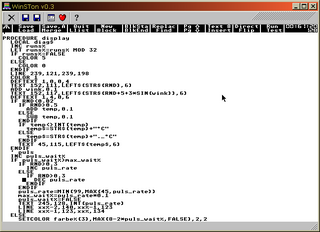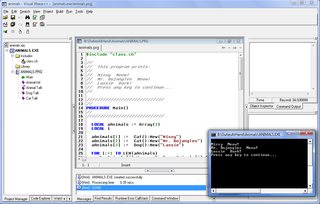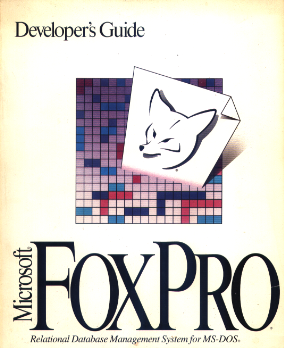Borland Software Corporation was a computing technology company founded in 1983 by Niels Jensen, Ole Henriksen, Mogens Glad, and Philippe Kahn. Its main business was developing and selling software development and software deployment products. Borland was first headquartered in Scotts Valley, California, then in Cupertino, California, and then in Austin, Texas. In 2009, the company became a full subsidiary of the British firm Micro Focus International plc. In 2023, Micro Focus was acquired by Canadian firm OpenText, which later absorbed Borland's portfolio into its application delivery management division.
Pascal is an imperative and procedural programming language, designed by Niklaus Wirth as a small, efficient language intended to encourage good programming practices using structured programming and data structuring. It is named after French mathematician, philosopher and physicist Blaise Pascal.
Turbo Pascal is a software development system that includes a compiler and an integrated development environment (IDE) for the programming language Pascal running on the operating systems CP/M, CP/M-86, and DOS. It was originally developed by Anders Hejlsberg at Borland, and was notable for its very fast compiling. Turbo Pascal, and the later but similar Turbo C, made Borland a leader in PC-based development tools.
dBase was one of the first database management systems for microcomputers and the most successful in its day. The dBase system included the core database engine, a query system, a forms engine, and a programming language that tied all of these components together.
Clipper is an xBase compiler that implements a variant of the xBase computer programming language. It is used to create or extend software programs that originally operated primarily under MS-DOS. Although it is a powerful general-purpose programming language, it was primarily used to create database/business programs.
Ashton-Tate Corporation was a US-based software company best known for developing the popular dBASE database application and later acquiring Framework from the Forefront Corporation and MultiMate from Multimate International. It grew from a small garage-based company to become a multinational corporation. Once one of the "Big Three" software companies, which included Microsoft and Lotus, the company stumbled in the late 1980s and was sold to Borland in September 1991.

GFA BASIC is a dialect of the BASIC programming language, by Frank Ostrowski. The name is derived from the company, which distributed the software. In the mid-1980s to the 1990s it enjoyed popularity as an advanced BASIC dialect, but has been mostly superseded by several other programming languages. Official support ended in the early 2000s.
Object Pascal is an extension to the programming language Pascal that provides object-oriented programming (OOP) features such as classes and methods.
Visual Objects is an object-oriented computer programming language that is used to create computer programs that operate primarily under Windows. Although it can be used as a general-purpose programming tool, it is almost exclusively used to create database programs.
Paradox is a relational database management system currently published by Corel Corporation.
Harbour is a computer programming language, primarily used to create database/business programs. It is a modernised, open source and cross-platform version of the older Clipper system, which in turn developed from the dBase database market of the 1980s and 1990s.
Full Impact was a spreadsheet program for the Apple Macintosh computer released by Ashton-Tate in the late 1980s. Full Impact was known for excellent graphing and visual display, far better than contemporary versions of Microsoft Excel. But this was also its only really compelling feature, and it was unable to find a market niche given the dominance of Excel in the Macintosh marketplace.

FullWrite Professional was a word processor application for the Apple Macintosh, released in late 1988 by Ashton-Tate. The program was notable for its combination of a true WYSIWYG interface, powerful long-document processing features, and a well regarded outliner. It was also noted for its high resource demands, bugs, and its very late release.

Xbase++ is an object oriented programming language which has multiple inheritance and polymorphism. It is based on the XBase language dialect and conventions. It is 100% Clipper compatible language supporting multiple inheritance, polymorphism, object oriented programming. It supports the xBase data types, including Codeblocks. With Xbase++ it is possible to generate applications for Windows NT, 95, 98, Me, 2000, XP, VISTA and Windows 7, 8, 10.
The Jet Propulsion Laboratory Display Information System is a file management program written in FORTRAN.

FoxPro was a text-based procedurally oriented programming language and database management system (DBMS), and it was also an object-oriented programming language, originally published by Fox Software and later by Microsoft, for MS-DOS, Windows, Macintosh, and UNIX. The final published release of FoxPro was 2.6. Development continued under the Visual FoxPro label, which in turn was discontinued in 2007.

Visual FoxPro is a programming language that was developed by Microsoft. It is a data-centric and procedural programming language with object-oriented programming (OOP) features.
The .dbf file extension represents the dBase database file. The file type was introduced in 1983 with dBASE II. The file structure has evolved to include many features and capabilities. Several additional file types have been added, to support data storage and manipulation. The current .dbf file level is called Level 7. The .dbf format is supported by a number of database products.
RETRIEVE is a database management system (DBMS) offered on Tymshare's systems starting in August 1971. It was written in Tymshare's own SUPER FORTRAN on the SDS 940. It offered basic single-file, non-relational database functionality using an interactive programming language. It is one of the earliest examples of software as a service (SaaS).



